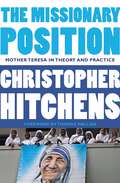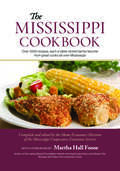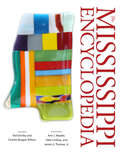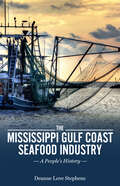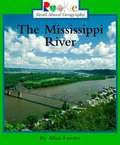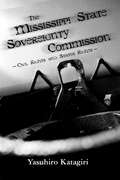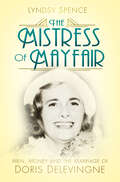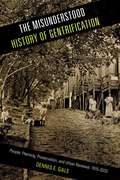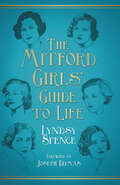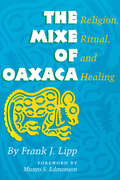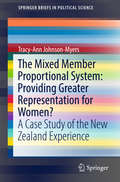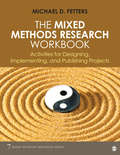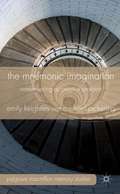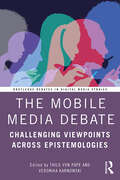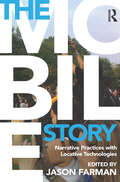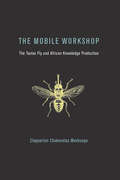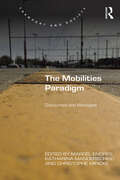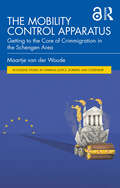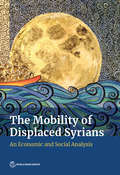- Table View
- List View
The Missionary Position: Mother Teresa in Theory and Practice
by Thomas Mallon Christopher Hitchens"A religious fundamentalist, a political operative, a primitive sermonizer, and an accomplice of worldly secular powers. Her mission has always been of this kind. The irony is that she has never been able to induce anybody to believe her. It is past time that she was duly honored and taken at her word."Among his many books, perhaps none have sparked more outrage than THE MISSIONARY POSITION, Christopher Hitchens's meticulous study of the life and deeds of Mother Teresa. A Nobel Peace Prize recipient beatified by the Catholic Church in 2003, Mother Teresa of Calcutta was celebrated by heads of state and adored by millions for her work on behalf of the poor. In his measured critique, Hitchens asks only that Mother Teresa's reputation be judged by her actions-not the other way around.With characteristic élan and rhetorical dexterity, Hitchens eviscerates the fawning cult of Teresa, recasting the Albanian missionary as a spurious, despotic, and megalomaniacal operative of the wealthy who long opposed measures to end poverty, and fraternized, for financial gain, with tyrants and white-collar criminals throughout the world.
The Mississippi Chinese: Between Black and White
by James W. LoewenThis scholarly, carefully researched book studies one of the most overlooked minority groups in America—the Chinese of the Mississippi Delta. During Reconstruction, white plantation owners imported Chinese sharecroppers in the hope of replacing their black laborers. In the beginning they were classed with blacks. But the Chinese soon moved into the towns and became almost without exception, owners of small groceries. Loewen details their astounding transition from “black” to essentially white status with an insight seldom found in studies of race relationships in the Deep South.
The Mississippi Cookbook
by Home Economics Division Mississippi Cooperative Extension ServiceThe Mississippi Cookbook was prepared to collect, make available, and preserve the favorite recipes of fine cooks throughout Mississippi. More than fifty years ago, over 7,000 recipes were collected from all areas of the state. From this total, the home economists of the Mississippi Cooperative Extension Service had the painfully difficult task of screening the amount down to the 1,200 best recipes.The names of the individuals who submitted follow each recipe and, in some cases, historical data about the dish is included. A special section includes favorite recipes of the wives of former governors. The appendices feature tables and charts that provide such valuable technical information as substitutions and equivalents, measuring ingredients, time and temperature guides, definitions, and servings.Featuring a foreword from renowned chef and storyteller Martha Hall Foose, this comprehensive collection of Mississippi's most popular recipes records the state's culinary heritage and its mastery of home cooking.
The Mississippi Encyclopedia
by Ted Ownby and Charles Reagan WilsonRecipient of the 2018 Special Achievement Award from the Mississippi Institute of Arts and Letters and Recipient of a 2018 Heritage Award for Education from the Mississippi Heritage TrustThe perfect book for every Mississippian who cares about the state, this is a mammoth collaboration in which thirty subject editors suggested topics, over seven hundred scholars wrote entries, and countless individuals made suggestions. The volume will appeal to anyone who wants to know more about Mississippi and the people who call it home. The book will be especially helpful to students, teachers, and scholars researching, writing about, or otherwise discovering the state, past and present.The volume contains entries on every county, every governor, and numerous musicians, writers, artists, and activists. Each entry provides an authoritative but accessible introduction to the topic discussed. The Mississippi Encyclopedia also features long essays on agriculture, archaeology, the civil rights movement, the Civil War, drama, education, the environment, ethnicity, fiction, folklife, foodways, geography, industry and industrial workers, law, medicine, music, myths and representations, Native Americans, nonfiction, poetry, politics and government, the press, religion, social and economic history, sports, and visual art. It includes solid, clear information in a single volume, offering with clarity and scholarship a breadth of topics unavailable anywhere else. This book also includes many surprises readers can only find by browsing.
The Mississippi Gulf Coast Seafood Industry: A People's History (America's Third Coast Series)
by Deanne Love StephensThe seafood industry on the coast of Mississippi has attracted waves of immigrants and other workers—oftentimes folks who were either already acquainted with maritime livelihoods or those who quickly adapted to the resources of the region. For generations the industry has provided employment and sustenance to Coast peoples. Deanne Love Stephens tells their stories and identifies key populations who have worked this harvest. Oyster and shrimp processing were the most significant of these trades, and much of the Gulf Coast's history follows these two delicacies. Harvesting, processing, and marketing oyster and shrimp products built the Mississippi seafood industry and powered the growth of the entire coastal region. This book is the first to offer a broad view of the many ethnic groups and distinct populations who toiled in the oyster and shrimp industries. Relying heavily upon contemporary newspapers, oral histories, and interviews to create a rich picture of the industry and its workers, the author presents the history of laboring people who daily toiled in factories and often went unheard and unrecognized. Stephens provides an overview of significant early developments and the beginnings of the industry, considering the development of railroad expansion, lighthouse construction, and ice technology. She covers significant state and federal legislation that both defined and protected marine resources, illustrating the depth of the industry’s importance as Mississippians wrestled with adequate protective measures to preserve oyster and shrimp resources throughout the nineteenth and twentieth centuries.
The Mississippi River (Rookie Read-about Geography Series)
by Allan FowlerFollow the Mississippi River from its source near Canada to the Gulf of Mexico and discusses its history, towns, and physical features. <P><P> Emergent readers (Ages 6-7) can expand their horizons and take off on adventures to cities, nations, waterways, and habitats around the world or right in their own backyard through this easy-to-read, nonfiction series. NIMAC-sourced textbook
The Mississippi State Sovereignty Commission: Civil Rights and States' Rights
by Yasuhiro KatagiriIn 1956, two years after the U.S. Supreme Court unanimously outlawed legally imposed racial segregation in public schools, Mississippi created the State Sovereignty Commission. This was the executive agency established “to protect the sovereignty of the State of Mississippi . . . from encroachment thereon by the Federal Government.” The code word encroachment implied the state's strong resolve to preserve and protect the racial status quo. In the nomenclature the formality of the word sovereignty supposedly lent dignity to the actions of the Commission. For all practical purposes the Sovereignty Commission intended to wage this Deep South state's monolithic resistance to desegregation and to the ever-intensifying crusade for civil rights in Mississippi. In 1998 the papers of the Commission were made available for examination. No other state has such extensive and detailed documentary records from a similar agency. Exposed to public light, they unmasked the Commission as a counterrevolutionary department for political and social intrigue that infringed on individual constitutional rights and worked toward discrediting the civil rights movement by tarnishing the reputations of activists. As the eyes of the citizenry studied the records, the Commission slid from sovereign and segregated to unsavory and abominable. This book, the first to give a comprehensive history of this watchdog agency, shows how, to this day, the Sovereignty Commission remains obscure, debated, and for many citizens a star chamber of the most sinister sort. Why was the Commission created? What were some of the political and social climates that initiated its creation? What were its activities during its seventeen years? What was its impact on the course of Mississippi and southern history? Drawing on the newly opened materials at the Mississippi Department of Archives and History, this examination gives answers to such questions and traces the vicissitudes that took the Commission from governmental limelight to public opprobrium. This book also looks at the attitudes of the state's white citizenry, who, upon realizing the Commission's failure, saw the importance of a nonviolent accommodation of civil rights.
The Mistress of Mayfair: Men, Money and the Marriage of Doris Delevingne
by Lyndsy SpenceThe plot could have been inspired by Evelyn Waugh’s Vile Bodies, but unlike Waugh's novel – which parodies the era of the ‘Bright Young Things’ – The Mistress of Mayfair is a real-life story of scandal, greed, corruption and promiscuity at the heart of 1920s and ’30s high society, focusing on the wily, willful socialite Doris Delevingne and her doomed relationship with the gossip columnist Valentine Browne, Viscount Castlerosse. Marrying each other in pursuit of the finer things in life, their unlikely union was tempestuous from the off, rocked by affairs (with a whole host of society figures, including Cecil Beaton, Diana Mitford and Winston Churchill, amongst others) on both sides, and degenerated into one of London’s bitterest, and most talked about, divorce battles. In this compelling new book, Lyndsy Spence follows the rise and fall of their relationship, exploring their decadent society lives in revelatory detail and offering new insight into some of the mid twentieth century’s most prominent figures.
The Misunderstood History of Gentrification: People, Planning, Preservation, and Urban Renewal, 1915-2020 (Urban Life, Landscape and Policy #84)
by Dennis E. GaleThe origins of gentrification date back to World War I—only it was sometimes known as “remodeling” then. Dennis Gale’s insightful book, TheMisunderstood History of Gentrification, provides a recontextualization of American gentrification, planning, and policymaking. He argues that gentrification must be understood as an urban phenomenon with historical roots in the very early twentieth century. Gale uses solid empirical evidence to trace the embryonic revitalization of Georgetown, Greenwich Village, Beacon Hill, and elsewhere back to 1915. He shows how reinvestment and restoration reversed urban decline and revitalized neighborhoods. The Misunderstood History of Gentrification also explains how federal policies such as the Urban Redevelopment Program (later named Urban Renewal), which first emerged in 1949, razed urban slums and created an “urban crisis” that persisted in the 1960s and ‘70s. This situation soon prompted city gentrifiers and historic preservationists to reuse and rehabilitate existing structures. Within a more expansive historical framework, Gale offers a fresh perspective on and debunks misperceptions about gentrification in America.
The Misunderstood History of Gentrification: People, Planning, Preservation, and Urban Renewal, 1915-2020 (Urban Life, Landscape and Policy #84)
by Dennis E. GaleThe origins of gentrification date back to World War I—only it was sometimes known as “remodeling” then. Dennis Gale’s insightful book, TheMisunderstood History of Gentrification, provides a recontextualization of American gentrification, planning, and policymaking. He argues that gentrification must be understood as an urban phenomenon with historical roots in the very early twentieth century. Gale uses solid empirical evidence to trace the embryonic revitalization of Georgetown, Greenwich Village, Beacon Hill, and elsewhere back to 1915. He shows how reinvestment and restoration reversed urban decline and revitalized neighborhoods. The Misunderstood History of Gentrification also explains how federal policies such as the Urban Redevelopment Program (later named Urban Renewal), which first emerged in 1949, razed urban slums and created an “urban crisis” that persisted in the 1960s and ‘70s. This situation soon prompted city gentrifiers and historic preservationists to reuse and rehabilitate existing structures. Within a more expansive historical framework, Gale offers a fresh perspective on and debunks misperceptions about gentrification in America.
The Mitford Girls' Guide to Life
by Lyndsy Spence Joseph Dumas‘Touched with genius’ - The Spectator What’s the best way to get the upper hand in an argument solely through letters? How should you liven up a dull night at Buckingham Palace? When, exactly, is the best time to run away to the Spanish Civil War? The Mitford sisters – Nancy, Pamela, Diana, Unity, Jessica and Deborah – knew the answers to all these questions and more. Perhaps the most remarkable family of the mid-twentieth century, their exciting and varied lives, from communist to fascist to aristocrat, mean that there’s no problem they can’t solve.
The Mitten: A Ukrainian Folktale
by Jan BrettWhen Nicki drops his white mitten in the snow, he goes on without realizing that it is missing. One by one, woodland animals find it and crawl in; first, a curious mole, then a rabbit, a badger and others, each one larger than the last. Finally, a big brown bear is followed in by a tiny brown mouse and what happens next makes for a wonderfully funny climax.
The Mixe of Oaxaca: Religion, Ritual, and Healing
by Frank J. Lipp&“This elegantly written and thoroughly researched ethnography&” is the definitive study of the Mixe people of mountain Oaxaca (Ethnohistory). The Mixe of Oaxaca is the first extensive ethnography of the Mixe, with a special focus on Mixe religious beliefs and rituals and the curing practices associated with them. It records the procedures, design-plan, corresponding prayers, and symbolic context of well over one hundred rituals. First published in 1991, The Mixe of Oaxaca was hailed as a model of ethnographic research. For this edition, Frank Lipp has written a new preface in which he comments on the relationship of Mixe religion to current theoretical understandings of present-day Middle American folk religions.
The Mixe of Oaxaca: Religion, Ritual, and Healing
by Frank J. Lipp&“This elegantly written and thoroughly researched ethnography&” is the definitive study of the Mixe people of mountain Oaxaca (Ethnohistory). The Mixe of Oaxaca is the first extensive ethnography of the Mixe, with a special focus on Mixe religious beliefs and rituals and the curing practices associated with them. It records the procedures, design-plan, corresponding prayers, and symbolic context of well over one hundred rituals. First published in 1991, The Mixe of Oaxaca was hailed as a model of ethnographic research. For this edition, Frank Lipp has written a new preface in which he comments on the relationship of Mixe religion to current theoretical understandings of present-day Middle American folk religions.
The Mixed Member Proportional System: Providing Greater Representation for Women?
by Tracy-Ann Johnson-MyersThis Brief discusses the adoption of the mixed member proportional (MMP) electoral system in New Zealand and its subsequent effect on representation for women. Concerns about the homogeneity of the legislature under the Single Member Plurality electoral system and the need for increased representativeness and greater proportionality of party preference lead to the changeover in 1996. The book addresses the question of whether an increase in descriptive representation for women in New Zealand's House of Representatives has translated to policy outcomes that are beneficial to them. It also examines the extent to which female MPs meet the expectation that they will act for members of their groups; pushing minority and gender-friendly legislation and policies into the political arena. Finally, it raises questions about where women are found in New Zealand's decision making bodies and what influence they might have on policy outcomes. The first book to examine the effects of the MMP system on female descriptive and substantive representation using a case study analysis, this Brief adds to the literature on electoral systems and women's political representation. This book will be of use to political science students at both the undergraduate and graduate level, particularly those interested in electoral studies, political institutions, politics and gender, and minority representation.
The Mixed Methods Research Workbook: Activities for Designing, Implementing, and Publishing Projects (Mixed Methods Research Series #7)
by Michael D. FettersWritten by Michael D. Fetters, one of the leading scholars in the field and co-editor of the Journal of Mixed Methods Research, The Mixed Methods Research Workbook: Activities for Designing, Implementing, and Publishing Projects is the perfect tool for doctoral students and researchers who want support throughout their research project, as well as a practical way to apply the knowledge they’ve learned. With The Mixed Methods Research Workbook, you’ll be ready to tackle your mixed methods research project with confidence. Each chapter follows a familiar framework, starting with learning objectives for each piece of the mixed methods process. Readers have ample space in this text to write notes, fill out activities, and begin their process of actively designing and writing up a mixed methods study. This easy-to follow process gives readers an immediate structure to their projects. Exemplar boxes provide a starting framework, with the text encouraging deeper reflection on mixed methods challenges and opportunities. Stories from the field illuminate struggles and suggestions with the benefit of hindsight. Checklists at the end of each chapter help readers stay organized and key resources provide up-to-date lists of material for further study. From start to finish, readers can follow along with this text as they work on their projects. The text begins by assisting readers in identifying topics and conducting literature reviews in the context of mixed methods, zeroing in to address mixed-methods-specific challenges like integration, leveraging advantages of both qualitative and quantitative methods, and incorporating theory and personal backgrounds. Identifying data sources helps readers organize their data collection. Two chapters on research designs structure the data collection process with procedural diagrams. A unique chapter on mixed methods sampling offers application through basic and advanced designs. The book illustrates integrating and implementing mixed methods designs with practical advice for each of stage of the process. Ethics in a mixed methods context readies readers for the research protocol stage. Several chapters fully explicate the data analysis process, including developing a joint display, a state-of-the-art procedure for analysis and presentation of findings. Closing out the process, the text tackles quality and evaluation in mixed methods studies, preparing your study for publication, and writing up your article.
The Mixed Methods Research Workbook: Activities for Designing, Implementing, and Publishing Projects (Mixed Methods Research Series #7)
by Michael D. FettersWritten by Michael D. Fetters, one of the leading scholars in the field and co-editor of the Journal of Mixed Methods Research, The Mixed Methods Research Workbook: Activities for Designing, Implementing, and Publishing Projects is the perfect tool for doctoral students and researchers who want support throughout their research project, as well as a practical way to apply the knowledge they’ve learned. With The Mixed Methods Research Workbook, you’ll be ready to tackle your mixed methods research project with confidence. Each chapter follows a familiar framework, starting with learning objectives for each piece of the mixed methods process. Readers have ample space in this text to write notes, fill out activities, and begin their process of actively designing and writing up a mixed methods study. This easy-to follow process gives readers an immediate structure to their projects. Exemplar boxes provide a starting framework, with the text encouraging deeper reflection on mixed methods challenges and opportunities. Stories from the field illuminate struggles and suggestions with the benefit of hindsight. Checklists at the end of each chapter help readers stay organized and key resources provide up-to-date lists of material for further study. From start to finish, readers can follow along with this text as they work on their projects. The text begins by assisting readers in identifying topics and conducting literature reviews in the context of mixed methods, zeroing in to address mixed-methods-specific challenges like integration, leveraging advantages of both qualitative and quantitative methods, and incorporating theory and personal backgrounds. Identifying data sources helps readers organize their data collection. Two chapters on research designs structure the data collection process with procedural diagrams. A unique chapter on mixed methods sampling offers application through basic and advanced designs. The book illustrates integrating and implementing mixed methods designs with practical advice for each of stage of the process. Ethics in a mixed methods context readies readers for the research protocol stage. Several chapters fully explicate the data analysis process, including developing a joint display, a state-of-the-art procedure for analysis and presentation of findings. Closing out the process, the text tackles quality and evaluation in mixed methods studies, preparing your study for publication, and writing up your article.
The Mnemonic Imagination
by Michael Pickering Emily KeightleyAn exploration of some of the key theoretical challenges and conceptual issues facing the emergent field of memory studies, from the relationship between experience and memory to the commercial exploitation of nostalgia, using the key concept of the mnemonic imagination.
The Mobile Media Debate: Challenging Viewpoints Across Epistemologies (Routledge Debates in Digital Media Studies)
by Veronika Karnowski Thilo Von PapeAn accessible, engaging, and timely overview of the key debates surrounding the role of mobile media in today’s society.Edited by Thilo von Pape and Veronika Karnowski, this volume includes contributions from a variety of geographical and disciplinary backgrounds, reflecting the diverse standpoints within the field of mobile media and communication. The collection explores perspectives from the micro-level of individual or small group appropriation of mobile media, to the uses and effects among larger communities, public spaces, and societies at large. The chapters address individual uses and effects of mobile media, such as problematic smartphone use, news consumption through mobile media, and mobile media as an empowerment tool for entrepreneurs. They also discuss the role of mobile media in private and professional social constellations (phubbing, personal mobile device use at work) and in struggles over personal empowerment, counter-power, and global development. Looking beyond the smartphone, the book also explores underlying infrastructures and emerging technologies such as augmented and virtual reality.This book is a key resource for students and scholars of media and communication, as well as policy-makers and practitioners working in related areas such as media education.
The Mobile Story: Narrative Practices with Locative Technologies
by Jason FarmanWhat happens when stories meet mobile media? In this cutting-edge collection, contributors explore digital storytelling in ways that look beyond the desktop to consider how stories can be told through mobile, locative, and pervasive technologies. This book offers dynamic insights about the new nature of narrative in the age of mobile media, studying digital stories that are site-specific, context-aware, and involve the reader in fascinating ways. Addressing important topics for scholars, students, and designers alike, this collection investigates the crucial questions for this emerging area of storytelling and electronic literature. Topics covered include the histories of site-specific narratives, issues in design and practice, space and mapping, mobile games, narrative interfaces, and the interplay between memory, history, and community.
The Mobile Workshop: The Tsetse Fly and African Knowledge Production (The\mit Press Ser.)
by Clapperton Chakanets MavhungaHow the presence of the tsetse fly turned the African forest into an open laboratory where African knowledge formed the basis of colonial tsetse control policies.The tsetse fly is a pan-African insect that bites an infective forest animal and ingests blood filled with invisible parasites, which it carries and transmits into cattle and people as it bites them, leading to n'gana (animal trypanosomiasis) and sleeping sickness. In The Mobile Workshop, Clapperton Chakanetsa Mavhunga examines how the presence of the tsetse fly turned the forests of Zimbabwe and southern Africa into an open laboratory where African knowledge formed the basis of colonial tsetse control policies. He traces the pestiferous work that an indefatigable, mobile insect does through its movements, and the work done by humans to control it.Mavhunga's account restores the central role not just of African labor but of African intellect in the production of knowledge about the tsetse fly. He describes how European colonizers built on and beyond this knowledge toward destructive and toxic methods, including cutting down entire forests, forced “prophylactic” resettlement, massive destruction of wild animals, and extensive spraying of organochlorine pesticides. Throughout, Mavhunga uses African terms to describe the African experience, taking vernacular concepts as starting points in writing a narrative of ruzivo (knowledge) rather than viewing Africa through foreign keywords. The tsetse fly became a site of knowledge production—a mobile workshop of pestilence.
The Mobilities Paradigm: Discourses and Ideologies (Transport and Society)
by Katharina Manderscheid Marcel Endres Christophe MinckeOver the last two decades, the conceptualisation and empirical analysis of mobilities of people, objects and symbols has become an important strand of social science. Yet, the increasing importance of mobilities in all parts of the social does not only happen as observable practices in the material world but also takes place against the background of changing discourses, scientific theories and conceptualisations and knowledge. Within the formation of these mobilities discourses, the social sciences constitute a relevant actor. Focussing on mobility as an object of knowledge from a Foucauldian perspective rather than a given entity within the historical contingency of movement, this book asks: How do discourses and ideologies structure the normative substance, social meanings, and the lived reality of mobilities? What are the real world effects of/on the will and the ability to be mobile? And, how do these lived realities, in turn, invigorate or interfere with certain discourses and ideologies of mobility?
The Mobilities of Ships
by Anyaa Anim-Addo, William Hasty and Kimberley PetersWe live in a world that is ever on the move, as is increasingly recognised within research on mobilities. Yet studies of mobility have failed to ‘go to sea’ with the same enthusiasm as mobilities ashore. When we consider mobility, we most often examine those movements that evidently form part of our everyday lives. We forget to look outwards to the sea. Yet ships have played – and continue to play – a significant role in shaping socio-cultural, political and economic life. This book turns our attention to the manifold mobilities that occur at sea through an exploration of the mobilities of ships themselves as well as the movements of objects, subjects and ideas that are mobilised by ships. The Mobilities of Ships brings together seven chapters that tack through unexplored waters and move between diverse case studies, including pirate ships, naval vessels and luxury yachts. In so doing, The Mobilities of Ships offers a rich insight into the world of shipping mobilities past and present.This book was published as a special issue of Mobilities.
The Mobility Control Apparatus: Getting to the Core of Crimmigration in the Schengen Area (Routledge Studies in Criminal Justice, Borders and Citizenship)
by Maartje van der WoudeThis book critically explores the complexities of intra-Schengen border control and migration dynamics within Europe. It provides a comprehensive analysis of how various actors, including border officials and state apparatuses, interact in managing mobility and enforcing controls. The theoretical foundation draws on Foucault’s concept of the dispositif, examining how borders are enforced through a combination of legal frameworks, discourses, and on-the-ground practices.The book emphasises the importance of discretion in border control, arguing that it plays a pivotal role in shaping decisions at both the organisational and street levels. It delves into the experiences of Dutch border control officers and the wider European context, offering a comparative analysis of Europe’s intra-Schengen borderlands. By drawing on real-world case studies, it showcases the tensions between security and mobility and how migration is managed through both visible and covert policing practices. The work is grounded in rich qualitative data, collected over years of fieldwork, and addresses key debates in migration and criminology studies, particularly the evolving concept of ‘crimmigration’ and its implications for human rights and security policies.This book will be of interest to criminologists, sociologists, legal scholars, and political scientists alike, as well as all those engaged in studies on migration, mobility, and the European Union.The Open Access version of this book, available at http://www.taylorfrancis.com, has been made available under a Creative Commons [Attribution-Non Commercial-No Derivatives (CC-BY-NC-ND)] 4.0 license.
The Mobility of Displaced Syrians: An Economic and Social Analysis
by World BankThe war in Syria, now in its eighth year, continues to take its toll on the Syrian people. More than half of the population of Syria remains displaced; 5.6 million persons are registered as refugees outside of the country and another 6.2 million are displaced within Syria's borders. The internally displaced persons include 2 million school-age children; of these, less than half attend school. Another 739,000 Syrian children are out of school in the five neighborhood countries that host Syria's refugees. The loss of human capital is staggering, and it will create permanent hardships for generations of Syrians going forward. Despite the tragic prospects for renewed fighting in certain parts of the country, an overall reduction in armed conflict is possible going forward. However, international experience shows that the absence of fighting is rarely a singular trigger for the return of displaced people. Numerous other factors—including improved security and socioeconomic conditions in origin states, access to property and assets, the availability of key services, and restitution in home areas—play important roles in shaping the scale and composition of the returns. Overall, refugees have their own calculus of return that considers all of these factors and assesses available options. The Mobility of Displaced Syrians: An Economic and Social Analysis sheds light on the 'mobility calculus' of Syrian refugees. While dismissing any policies that imply wrongful practices involving forced repatriation, the study analyzes factors that may be considered by refugees in their own decisions to relocate. It provides a conceptual framework, supported by data and analysis, to facilitate an impartial conversation about refugees and their mobility choices. It also explores the diversified policy toolkit that the international community has available—and the most effective ways in which the toolkit can be adapted—to maximize the well-being of refugees, host countries, and the people in Syria.
